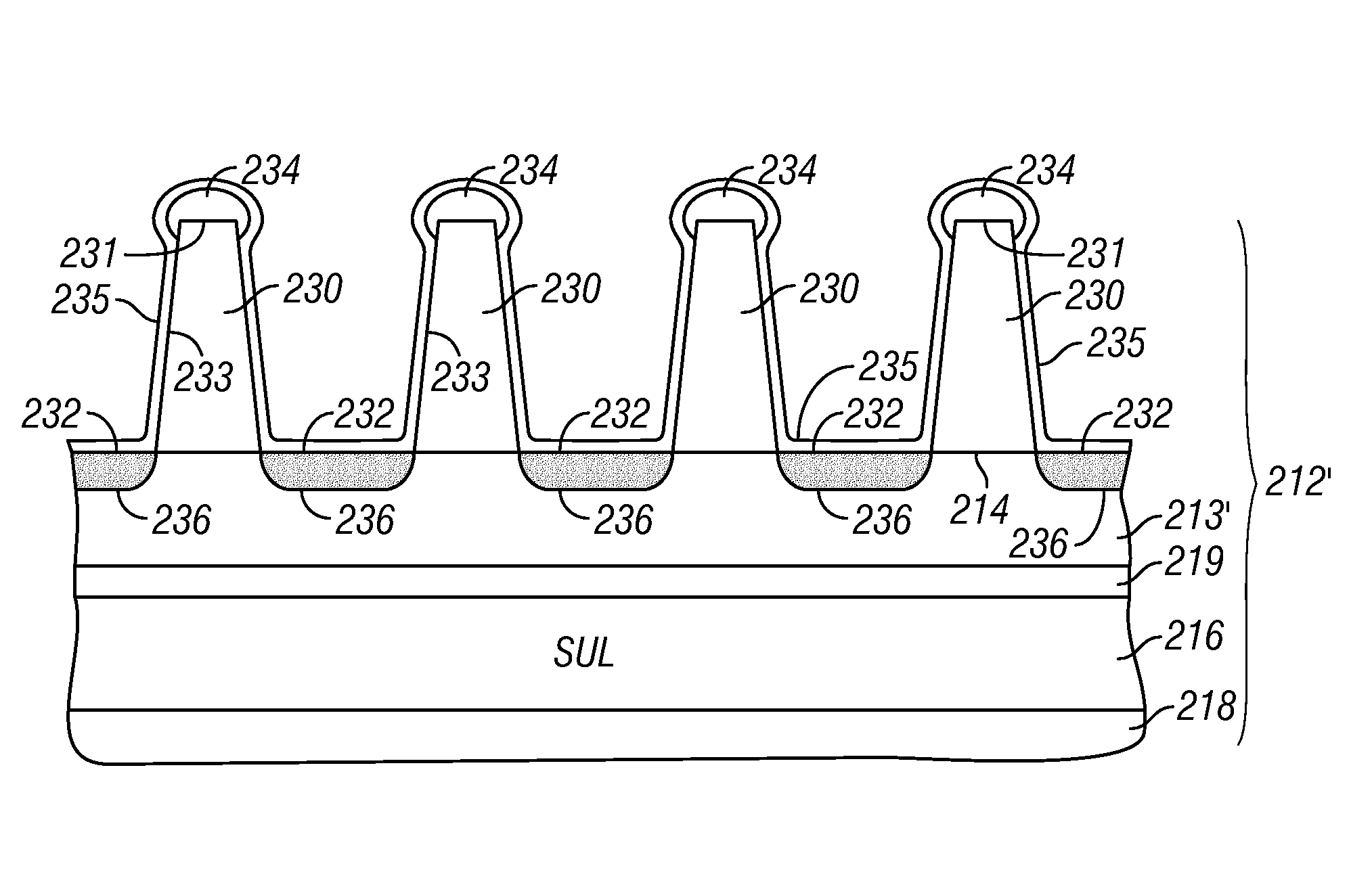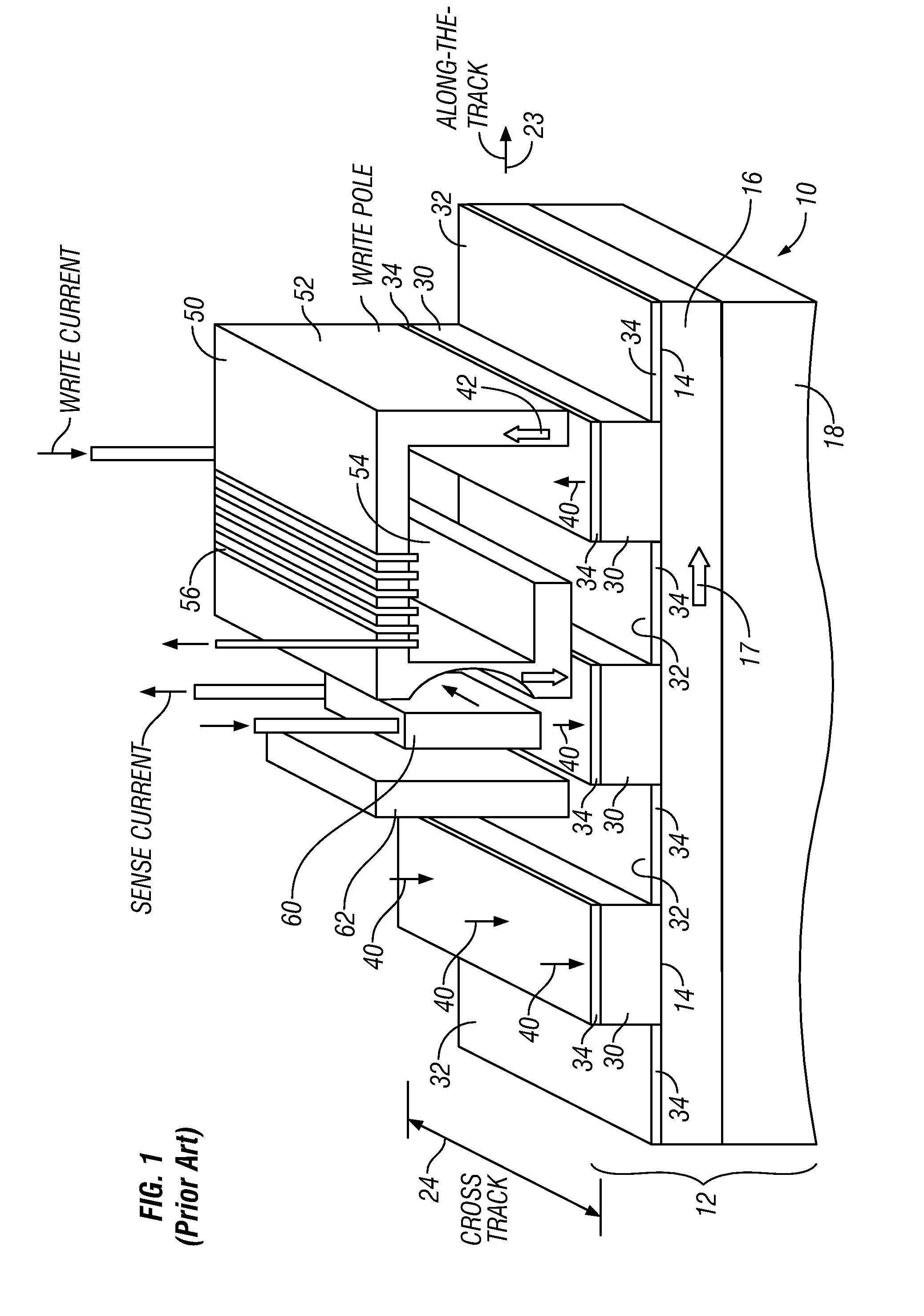Perpendicular magnetic recording medium with patterned magnetic islands and nonmagnetic trenches and manufacturing method for suppressing surface diffusion of trench material
a technology of magnetic recording media and surface diffusion, which is applied in the direction of magnetic materials for record carriers, instruments, record information storage, etc., can solve the problems of adversely affecting the writing of individual data bits and noise in the readback signal, and achieve the effect of suppressing diffusion
- Summary
- Abstract
- Description
- Claims
- Application Information
AI Technical Summary
Benefits of technology
Problems solved by technology
Method used
Image
Examples
Embodiment Construction
[0020]FIG. 1 is a schematic representation of a prior art perpendicular magnetic recording system with patterned perpendicular media. The system can be implemented in a magnetic recording disk drive, with the medium being a magnetic recording disk with the patterned bits arranged into concentric circular data tracks. FIG. 1 thus shows a portion of a disk 10 that includes a substrate 12 with a generally planar surface 14. A plurality of discrete patterned islands or pillars 30 extend generally perpendicularly from the surface 14 and are part of substrate 12. The pillars 30 are spaced apart, leaving troughs or trenches 32 recessed below the ends of the pillars 30. A layer 34 of perpendicular magnetic recording material is formed on the ends of the pillars 30 as well as on surface 14 in the trenches 32. The recording layer 34 on each of the pillars 30 is magnetized perpendicularly, as depicted by arrows 40, resulting in the recorded bits being stored in the recording layer 34 in a gene...
PUM
| Property | Measurement | Unit |
|---|---|---|
| thick | aaaaa | aaaaa |
| thick | aaaaa | aaaaa |
| thickness | aaaaa | aaaaa |
Abstract
Description
Claims
Application Information
 Login to View More
Login to View More - R&D
- Intellectual Property
- Life Sciences
- Materials
- Tech Scout
- Unparalleled Data Quality
- Higher Quality Content
- 60% Fewer Hallucinations
Browse by: Latest US Patents, China's latest patents, Technical Efficacy Thesaurus, Application Domain, Technology Topic, Popular Technical Reports.
© 2025 PatSnap. All rights reserved.Legal|Privacy policy|Modern Slavery Act Transparency Statement|Sitemap|About US| Contact US: help@patsnap.com



